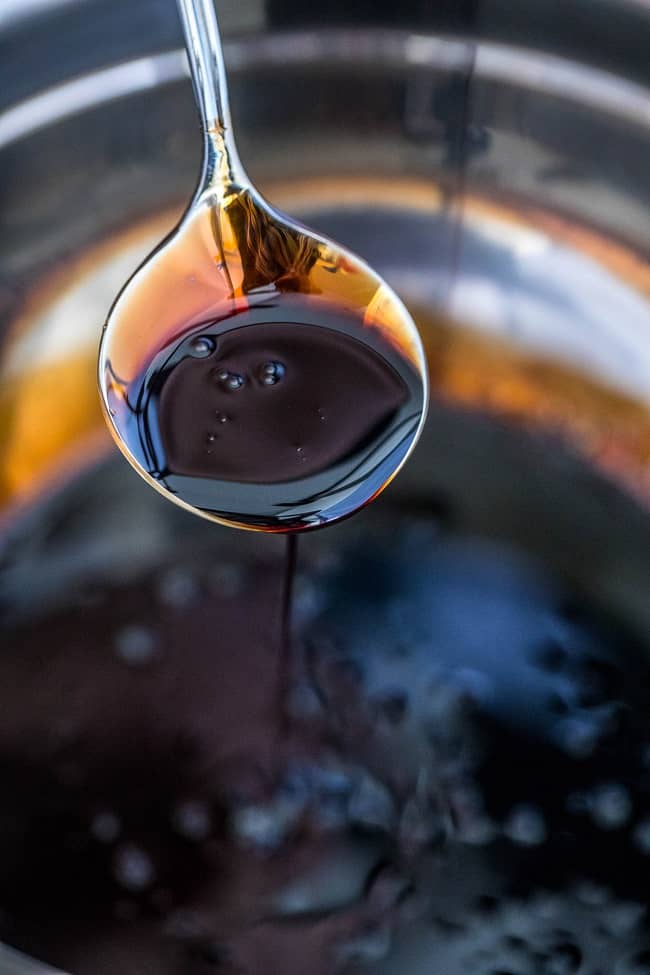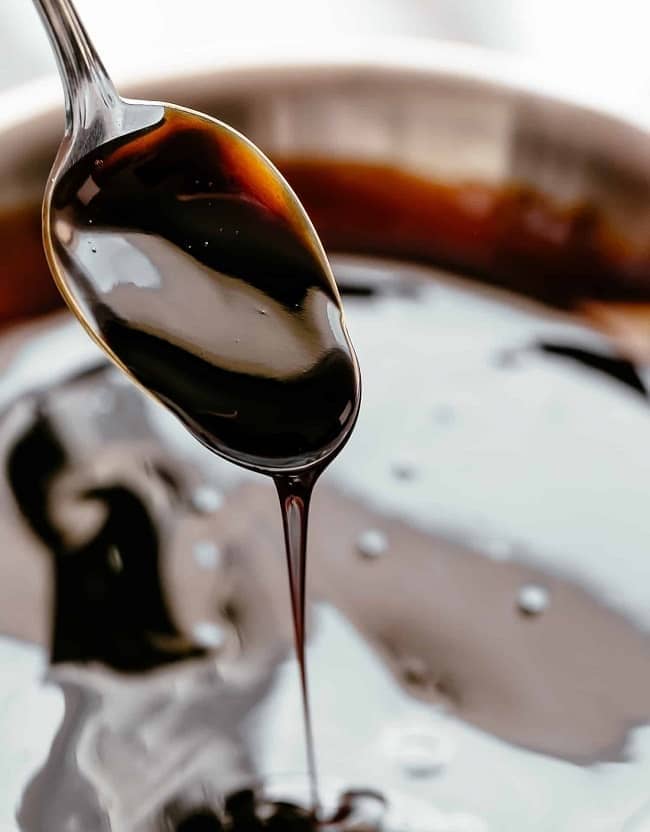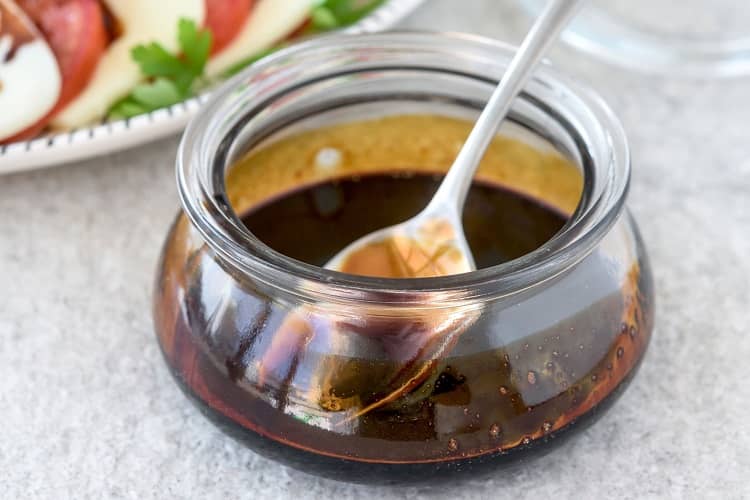- Recipe: Balsamic Reduction
- Writer: Lizzie Green
- Content-Type: Food Blog
Do you want to give a salad, appetizer, or side dish a flavor that is both sweet and sour? Prepare a reduction of balsamic vinegar! You only need ten minutes and one primary component for this.
Since it is the time of year when everything Caprese-related is in full swing (you can find the recipes for my salad here and my skewers here! ), I thought I’d go ahead and offer a recipe for a straightforward balsamic glaze as well.
The preparation of this punchy reduction couldn’t be any simpler, and its flavor, which is both sweet and sour, is the ideal complement to summery foods like basil and tomatoes.
Despite this, the recipe for the balsamic glaze can be useful in other seasons of the year as well.
You can serve it with ruby red strawberries in the spring, combine it with roasted Brussels sprouts in the fall, and drizzle it over roasted acorn squash in the winter.
All of these preparations are seasonal. If I’m being completely honest, as soon as you figure out how to make a balsamic reduction, you’ll want to drizzle it on everything.
How to Make a Glaze with Balsamic Vinegar

The good news is that to make this recipe for balsamic glaze, you will only need a single item. Although there are recipes that call for maple syrup or brown sugar, I don’t think either one is essential.
The reduced form of balsamic vinegar is already sufficiently syrupy and sweet on its own.
And what about the other good news? The preparation of this balsamic glaze requires only around ten minutes of your time.
- In a small saucepan, pour in one cup of balsamic vinegar, and then bring the mixture up to a boil.
- After that, lower the heat and continue to boil the vinegar while stirring it frequently to prevent it from burning until it reaches the desired consistency. The precise cooking time will be determined by the consistency of the balsamic reduction that you desire. It is important to keep in mind that as it cools, it will continue to thicken.
That wraps it up! The process of making a balsamic glaze at home couldn’t be easier.
Balsamic Reduction: How to Put It to Use
If you want a dish to have a burst of sweet and sour flavor, use this balsamic glaze. It may be used in any situation. To get you thinking, here are some suggestions to get you going:
- Drizzle it over a Caprese salad. Even on skewers of Caprese, it tastes fantastic!
- Mix it with Brussels sprouts that have been roasted. There is a good reason why this pairing is considered a classic.
- Or any of the other roasted vegetables! The varieties of squash known as butternut, acorn, and delicata, as well as broccoli, beets, fennel, and tomatoes, are among my favorites.
Serve it on vegetables that have been grilled. Consider skewers of zucchini, onions, and other vegetables. - Accompany it with some fresh fruit. You can give it a try in this strawberry salad, or you can add it to this burrata recipe with tomatoes and peaches. Additionally, it would be delicious on grilled peaches.
- Drizzle it atop the pizza. It fits in particularly well on a Margherita pizza.
- As a sophisticated summer snack, you can serve it atop bruschetta. This balsamic reduction is sure to be delicious no matter what, as long as tomatoes and basil are included in the dish.
- Or enjoy it for dessert. It is a topping that is out of this world for ice cream!
Balsamic Reduction (Balsamic Glaze)
| Time Required: 12 Minutes Serves: 4 |
This glaze is easy to make and makes a sweet and tangy topping that is excellent on roasted or grilled veggies, bruschetta, pizza, fruit, and more! You can find specific tips for serving in the post that was just above.
Ingredients
- 1 cup balsamic vinegar
Instructions

- Put the vinegar in a small saucepan and heat it over low heat until it begins to simmer.
- Reduce the heat and simmer the mixture, stirring it frequently, for around 8 to 12 minutes, until it has become thick and reduced. The amount of time needed will be determined by the thickness you want. As the temperature drops, the balsamic vinegar will become more viscous.
- For serving suggestions, please refer to the earlier blog post.
